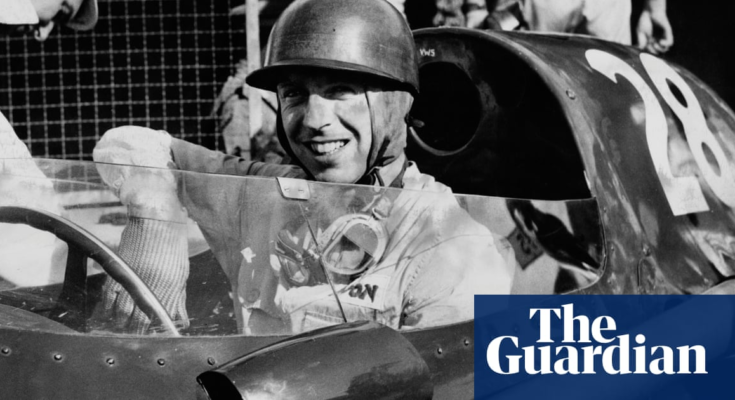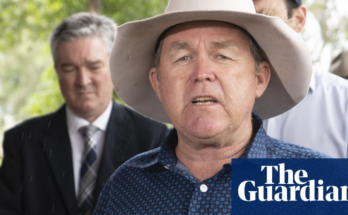Leading Formula One racing driver of the 1950s who won six world championship grands prix
Tony Brooks was taking a weekend off from the final year of his dental studies in Manchester when, in October 1955, he became the first British driver to win a postwar grand prix in a British car.
The Gran Premio di Siracusa was not a world championship race, and the field was not of the highest quality, but to beat the Italian teams – and particularly the mighty Maseratis – on their home ground with his humble Connaught was a noteworthy feat, particularly since he had never taken the wheel of a Formula One car before the previous day’s practice session.
Brooks, who has died aged 90, was as surprised as anyone by the result he achieved on the Sicilian roads, but it led to a distinguished career at the top level. He went on to win six world championship grands prix – and in 1959, while driving for the team of Enzo Ferrari, he came close to capturing the drivers’ championship itself.
That he did not win it – and was widely criticised in Italy as a result – came about through circumspection. He had travelled to the last race of the season, the US Grand Prix at Sebring, in contention for the title with Jack Brabham and Stirling Moss. To see off Brabham, Brooks needed to win and take the extra point awarded for the fastest lap, with the Australian finishing no higher than third. To beat Moss, he needed to win with his fellow Englishman no higher than second and without taking the extra point.
On the first lap of the race, however, Brooks was accidentally rammed in the rear by his young teammate Wolfgang von Trips, triggering a promise to himself – following two big accidents earlier in his career caused by mechanical problems – never again to compete in a potentially dangerous machine. Now, fearing that his rear suspension had been damaged in the collision, he called in at the pits and asked his mechanics to investigate. Their examination revealed nothing amiss and he was able to resume, but could finish only third, leaving Brabham to take the title. Enzo Ferrari was not best pleased.
Brooks was an extremely fast and polished driver who may have acquired prudence but lacked nothing in courage. He particularly enjoyed the challenge of the road circuits, then still in widespread use, with their natural hazards and almost complete lack of safety precautions, but had no trouble defending his refusal to take additional risks with suspect machinery. “I survived the dangerous 50s when far too many of my racing colleagues did not,” he pointed out, adding that all his biggest wins had come after he adopted that approach.
He was born in Dukinfield, Cheshire, the son of a dentist, Charles Brooks, and his wife, Irene, who both liked fast cars. Educated as a boarder at the Jesuit-run Barlborough Hall and Mount St Mary’s college in Derbyshire, where he distinguished himself on the rugby field, he enrolled in 1950 at the Manchester University dental school. Two years later, just after his 20th birthday, he competed for the first time in his mother’s Healey Silverstone sports car, finishing fifth in a five-lap race at Goodwood.
For 1953 he switched to a much faster Frazer Nash owned by a family friend. Throughout that year and the following season he made a good impression, and in September 1954 he was invited to drive a factory-entered Frazer Nash of a more modern type in the Tourist Trophy at Dundrod, in Co Antrim, his first overseas event.
A few weeks later he was asked by John Wyer, Aston Martin’s team manager, to take part in a series of tests at an Oxfordshire airfield, leading to an invitation to join them for 1955. Accepting the offer of a £50 retainer and a share of the prize money and other bonuses, he made his debut with the team at Le Mans, co-driving with John Riseley-Prichard, an insurance broker, in the 24-hour race. When Pierre Levegh’s Mercedes crashed into the crowd in front of the main grandstand, killing 81 spectators and the driver, Brooks was only a few seconds behind and had to brake hard before picking his way through the wreckage strewn across the track.
Several good placings at the wheel of Riseley-Prichard’s Formula Two Connaught led to the offer of the works entry in the grand prix car at Syracuse. The result put Brooks’s name in the headlines, although it could not save the little Surrey-based team from eventual bankruptcy. An offer from the BRM team for 1956 looked promising, but the car’s mechanical unreliability reached a nadir when the throttle stuck open during the British Grand Prix at Silverstone. He was thrown out as the car somersaulted; had he been restrained by modern seat belts, he would probably have died when the petrol tank exploded as the car came to rest upside down.
A few days before the accident, during a sports car meeting in Rouen, he had met Pina Resegotti, an elegant young woman from Pavia, near Milan, who was on the way to London as part of the study course for her doctorate in foreign languages. Their relationship deepened as he worked his way through a copy of Teach Yourself Italian in order to converse with her family, and they married in 1958.
Brooks had continued his formal dentistry studies and received his degree in December 1956, by which time he had left BRM to join the Vanwall team, owned by the millionaire ball-bearing manufacturer Tony Vandervell, his basic retainer leaping to £2,000 a year. At Aintree in the summer of 1957 he and Moss made history when they shared the first world championship victory for a British car, the triumph coming while he was still recovering from cuts and bruises suffered at Le Mans a month earlier when the gearbox of his Aston Martin stuck and the car finished on its back in a sandbank.
Knowing that he would not be strong enough to complete the full distance, he agreed to keep the car as high up the order as possible in case one of his teammates retired and could take it over, as the rules then allowed. When Moss’s Vanwall began to misfire, they swapped cars and Moss drove Brooks’s healthy machine on to a famous victory.
Moss was the team’s No 1 driver, with the right to pick the best equipment, and he went on to victories at Pescara and Monza that year, while Brooks had to be content with a win for Aston Martin in the Nürburgring 1000km, co-driving with Noel Cunningham-Reid. In 1958, however, he scored grand prix victories at Spa, the Nürburgring and Monza, three classic circuits that provided a driver with great challenges, matching Moss’s victories at Buenos Aires, Oporto and Casablanca. Both Vanwall drivers were beaten to the title by their compatriot Mike Hawthorn, who accumulated more points despite guiding his Ferrari to only a single victory.
The Scuderia Ferrari would be Brooks’s next stop, with mixed results, although wins at Reims and the banked AVUS track in Berlin enabled him to finish the 1959 season in second place in the drivers’ standings. He considered retirement when Pina gave birth to the first of their children that autumn but continued for two more years, the first in a Cooper-Climax entered by the Yeoman Credit team and the second in a BRM. The results were almost uniformly disappointing, although he finished the last race of his career, the 1961 US Grand Prix at Watkins Glen, New York, in third place behind Innes Ireland’s Lotus and Dan Gurney’s Porsche.
In 1959 he had invested some of his earnings in a petrol station. Over the years, as his family grew up in St George’s Hill, Weybridge, Surrey, he expanded the business into a successful dealership, first for Austin and Rover cars, then Lancia and Fiat, and finally Ford, before selling the firm and retiring in 1993.
He had maintained his interest in the sport, spending 10 years as the motoring correspondent of the Observer. In 2008 he was honoured by a special tribute at the Goodwood Revival meeting, at which he returned to the cockpit of a Vanwall, wearing his familiar brown Herbert Johnson crash helmet.
A man of quiet dignity, courtesy and understated elegance, he was particularly admired by those who knew how close he had come to achieving immortality and recognised the grace with which he accepted that frustration.
His ample consolation was a life with Pina and their children, Caroline, David, Michèle, Julia and Stephanie.
• Tony Brooks (Charles Anthony Standish Brooks), racing driver, born 25 February 1932; died 3 May 2022
{{topLeft}}
{{bottomLeft}}
{{topRight}}
{{bottomRight}}
{{/ticker}}
{{heading}}
{{#paragraphs}}
{{.}}
{{/paragraphs}}{{highlightedText}}
{{#choiceCards}}{{/choiceCards}}



